
Kód: 09098767
Nonparametric Inference of Utilites
Autor Matthias Herfert
Doctoral Thesis / Dissertation from the year 2006 in the subject Business economics - Marketing, Corporate Communication, CRM, Market Research, Social Media, grade: 1,0, Leipzig Graduate School of Management (Betriebswirtschaft), ... celý popis
- Jazyk:
 Angličtina
Angličtina - Vazba: Brožovaná
- Počet stran: 208
Nakladatelství: Diplom.de, 2006
- Více informací o knize

Mohlo by se vám také líbit
-

Seeking The Cool Side of the Pillow
461 Kč -

Caution
656 Kč -

Hollywood, the Dream Factory
485 Kč -

Raven
222 Kč -

Vejez
329 Kč -

Vom Gemeindevorsteher zum Kommunalmanager
846 Kč
Dárkový poukaz: Radost zaručena
- Darujte poukaz v libovolné hodnotě a my se postaráme o zbytek.
- Poukaz se vztahuje na celou naši nabídku.
- Elektronický poukaz vytisknete z e-mailu a můžete ihned darovat.
- Platnost poukazu je 12 měsíců od data vystavení.
Více informací o knize Nonparametric Inference of Utilites
Nákupem získáte 514 bodů
 Anotace knihy
Anotace knihy
Doctoral Thesis / Dissertation from the year 2006 in the subject Business economics - Marketing, Corporate Communication, CRM, Market Research, Social Media, grade: 1,0, Leipzig Graduate School of Management (Betriebswirtschaft), language: English, abstract: Inhaltsangabe:Abstract:§In Chapter 2, Foundations , we provide a description of selected parts of theories which we believe are helpful to better understand the contribution of this thesis. We start with the presentation of several behavioral hypotheses in preference and utility theory. Next, we describe the basics of inferential statistics and Conjoint Analysis. Then, we describe probabilistic entropy, in addition to that a later established version of it, and its axiomatization as a general inference principle. We conclude Chapter 2 by presenting La Mura's decision-theoretic entropy, a version of entropy as an inference technique for expected utilities. La Mura had developed this connection between probabilistic entropy and expected utilities in his Ph.D. thesis.§Based on his work, the initial research objective for this dissertation had been to make his approach applicable to the inference of unique consumer utilities given some observed evidence, having in mind the vast amounts of data that nowadays are available to analysts but still not used very effectively, in order to jointly overcome the limitations of Conjoint Analysis as mentioned above.§In the following five chapters you will see that our research has instead resulted in a new method, namely Entropy Analysis, which is not based on expected utility functions but on ordinary utility functions. We close Chapter 2 with a conclusion for the following chapters.§In Chapter 3, Entropy Analysis , we derive the new method combining probabilistic cross-entropy and ordinary utility functions. We start by imposing a set of conditions on the inference method. Then, we suggest a normalization of utility functions such that they become formally a probability measure. Finally, we present and prove our main result.§In Chapter 4, Irrational Behavior , we present a solution for the problem of how to treat observed irrational behavior (see Definition 4.1) with Entropy Analysis. This is motivated by two reasons. First, we are hardly able to observe perfectly rational data in any survey or for any given set of transaction data. Therefore, any utility inference method that cannot deal with irrational data will not be meaningful for research or commercial applications.§Second, our method is at first sight formally structured in a way in which its application to irrational data would return an inferred utility function that is trivial, i.e. uniform (to be further explained at the beginning of the chapter).§Our solution to this problem involves the principled use of a specific version of our method which we call relative Entropy Analysis, the cross-entropy version of Entropy Analysis. We start the chapter by presenting our general technique. Next, we substantiate our technique by suggesting one widely applicable heuristic.§In Chapter 5, Consumer Choice Models , we develop three consumer choice models to apply our method to marketing problems. We start by developing a basic model for consumer choices in which we consider preferences that relate product characteristics or bundles of goods with money.§Next, we constrain this basic model by imposing conditions on preference relations which imply utilities that are quasi-linear in money. We do this because such utilities reduce technical complexity for utility inference problems and because we believe that quasi-linear utilities (which imply the absence of income effects) are sufficiently representative for all items that have relatively low prices. Our third choice model uses von Neumann-Morgenstern expected utilities to apply our method to inference of utilities over risky alternatives.§I...
 Parametry knihy
Parametry knihy
Zařazení knihy Knihy v angličtině Economics, finance, business & management Business & management Sales & marketing
5138 Kč
- Plný název: Nonparametric Inference of Utilites
- Podnázev: Entropy Analysis with Applications to Consumer Theory
- Autor: Matthias Herfert
- Jazyk:
 Angličtina
Angličtina - Vazba: Brožovaná
- Počet stran: 208
- EAN: 9783836600101
- ISBN: 3836600102
- ID: 09098767
- Nakladatelství: Diplom.de
- Hmotnost: 277 g
- Rozměry: 210 × 148 × 12 mm
- Datum vydání: 05. December 2006
Oblíbené z jiného soudku
-

How Brands Grow
823 Kč -

Luxury Strategy
1141 Kč -
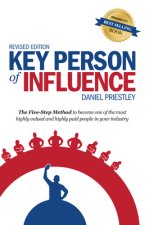
Key Person of Influence
276 Kč -
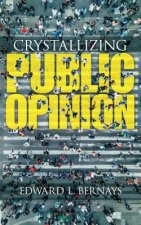
Crystallizing Public Opinion
270 Kč -

Contagious: Why Things Catch on
408 Kč -

Trust Me I'm Lying
303 Kč -

Audio Branding
783 Kč -

Principles of Marketing
2074 Kč -

Crystallizing Public Opinion
389 Kč -
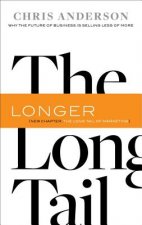
Long Tail
441 Kč -

Zig Ziglar's Secrets of Closing the Sale
441 Kč -

Building a StoryBrand
410 Kč -
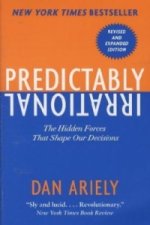
Predictably Irrational, Revised
213 Kč -

Cashvertising
416 Kč -

Sell or Be Sold
493 Kč -

How to Master the Art of Selling
420 Kč -

1-Page Marketing Plan
373 Kč -

Positioning: The Battle for Your Mind
437 Kč -

Spin Selling
718 Kč -
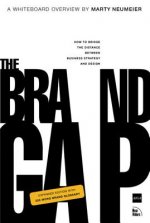
Brand Gap, The
678 Kč -

Brand Flip, The
567 Kč -

It's Not How Good You Are, It's How Good You Want to Be
295 Kč -

Powerful Phrases for Effective Customer Service: Over 700 Ready-to- Use Phrases and Scripts That Really Get Results
400 Kč -

Public Relations
415 Kč -

The Challenger Sale
462 Kč -
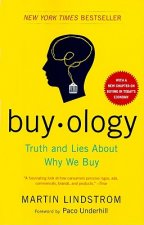
Buyology
398 Kč -

D&AD. The Copy Book
481 Kč -

Permission Marketing
286 Kč -

Scientific Advertising
422 Kč -

Challenger Sale
674 Kč -

Adweek Copywriting Handbook - The Ultimate Guide to Writing Powerful Advertising and Marketing Copy from One of America's Top Copywriters
574 Kč -

Selling Luxury - Connect With Affluent Customers, Create Unique Experiences Through Impeccable Service, and Close the Sale
611 Kč -

A Technique for Producing Ideas
223 Kč -

ZAG
674 Kč -

Guerilla Marketing
359 Kč -
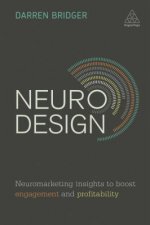
Neuro Design
783 Kč -

Drunk Tank Pink
399 Kč -

Sell It Like Serhant
316 Kč -

Designing Brand Identity - An Essential Guide for the Whole Branding Team 5e
1053 Kč -
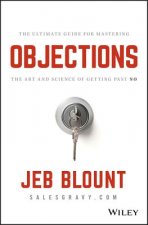
Objections - The Ultimate Guide for Mastering The Art and Science of Getting Past No
556 Kč -
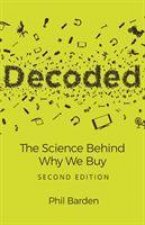
Decoded 2e - The Science Behind Why We Buy
516 Kč -

Raving Fans!
276 Kč -

Ten Principles Behind Great Customer Experiences, The
673 Kč -
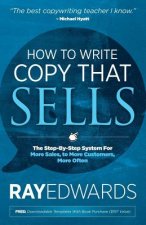
How to Write Copy That Sells
413 Kč -
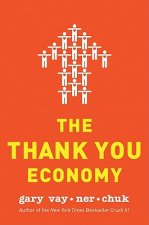
Thank You Economy
420 Kč -

My Life in Advertising and Scientific Advertising
338 Kč -
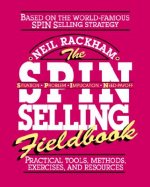
SPIN Selling Fieldbook: Practical Tools, Methods, Exercises and Resources
627 Kč -

Event Design Handbook
720 Kč -

Scientific Advertising
177 Kč
Osobní odběr Praha, Brno a 12903 dalších
Copyright ©2008-24 nejlevnejsi-knihy.cz Všechna práva vyhrazenaSoukromíCookies



 Vrácení do měsíce
Vrácení do měsíce 571 999 099 (8-15.30h)
571 999 099 (8-15.30h)